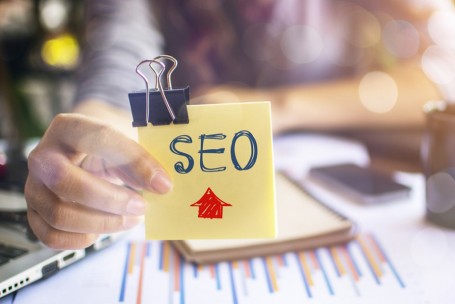Google has made nearly 3,200 changes to its search system as per last year’s record. About anyone can build a website and exercise it with ease in the present scenario. But just because your website is live, doesn’t mean that your design is elevated.
Now the question is, why does design matter to this extent? It consumes nearly 0.05 seconds of people to have a view of your website. Yes, you read it right- about 50 milliseconds. Most of that opinion is generated from the design.
And this particular design also has an impact over your conversions, credibility and most importantly has the power to make or break the success of your site. No website is damn perfect, but your aim should be to make your website as heightened as possible.
Have a look at this as well- Nearly 94 percent of deleterious feedback regarding a website is related to design and 38 percent users will stop involving with a website that possesses an unappealing layout. After an unscrupulous experience, 88 percent of patrons may not return to a website. That’s a huge figure. If in case your web design is not optimized for UX, it is going to injure your success.
On the contrary, well-design and well-established websites flourish. Viewers are more likely to convert, relish their experiences, and keep turning back in the future. As per a recent study, 77 percent of the agencies claim that poor website design is the most essential flaw of their clients.
A lot of factors goes into designing a website.
Instead of sitting idle. Google persists to make changes, so should you persist investing in enhancing your website.
Why should we care? If anything is true about web design and SEO, it’s that we can always anticipate change. SEOs cannot act indolent and expect rankings to be the same today, so will be tomorrow. Because search engines are continuously making changes, websites must persist to enhance to gain and maintain rankings in the search engine.
What sort of changes? What are these changes? Are they about changes in rankings? Or they are about user interface changes? It’s probably an amalgamation of everything.
1. Enhance your page-loading speed
Your time consumed in loading a page is essential for certain reasons. Firstly, if your page loading speed is too slow, Google is likely to recognize it, and it will impact your ranking. A slow website will also affect the way visitors get involved with your pages. This is terrifying from an SEO point of view as it will kill the traffic on your site. On the contrary, if your page loads quickly, people will keep returning.
It has been noticed that people usually abandon a website that takes more than 3 seconds to load. Yes, you read it right. Three seconds- that’s all you have, or you lose 40 out of every 100 visitors.
2. Generate quality content
Do you frequently update your website?
If you haven’t sensed it since the day you built it, you possibly don’t possess an excellent SEO ranking at present. To generate more traffic on your website and augment its popularity, you need to offer visitors a reason to come back. Your content needs to be a qualitative, most recent one and pertinent. This indirectly indicates how much time people spend on your website. Websites that deliver highly informative content has long dwelling time. When users bookmark your website from browser, it can boost your SEO ranking.
Break your content with header tags- Headlines are yet another way to help enhance the user experience of your website. If your website is a timeline of text, it is going to demotivate people from spending a long time browsing it. Also, take into account aspects like font size and typography. Make use of coloured text, bold font. Bullet points and check-lists make it simple for visitors to scan your content. Stop stuffing your web page.
3. Enhance your images
Pictures and other respective images are great for your website. But you need to ensure they’re optimized appropriately if you want these images to enhance your SEO ranking. Here we refer to factors like the file format and size. You can also use your images to snitch in keywords by naming them accordingly.
4. Start the blog section
Blogging can prove out to be an amazing activity for your business. It’s an amazing tool to generate leads and thereby help you engage with visitors. But most people fail to understand that blogging help enhances SEO rankings.
Other factors like links, increased readability, and keywords can also be included in these posts.
5. Get associated with Google business
Local SEO is essential, specifically if you’re running a brick and mortar business. If you have been saving on this aspect of SEO, you will need to spend a few minutes setting up an account on Google Business / Bing Places. This enables you to edit your business info, verify contact info, add images, and screen reviews.
This will give you an edge over competitors who usually fail to invest in this powerful tool. No matter your website is new or it’s been around for a decade. These are the best web design practices that you must abide by.
6. Prioritize SEO
We have briefly discussed this subject when we talked about why you need SEO? But everything you try or accomplish on your website should circle back to SEO.
93 percent of internet experiences begin with a search engine. So your SEO strategy must go beyond merely adding keywords to your blog posts. Avoiding SEO may give your competitors an edge over you.
Lastly, no website is perfect. There are always ways to enhance your website design.



